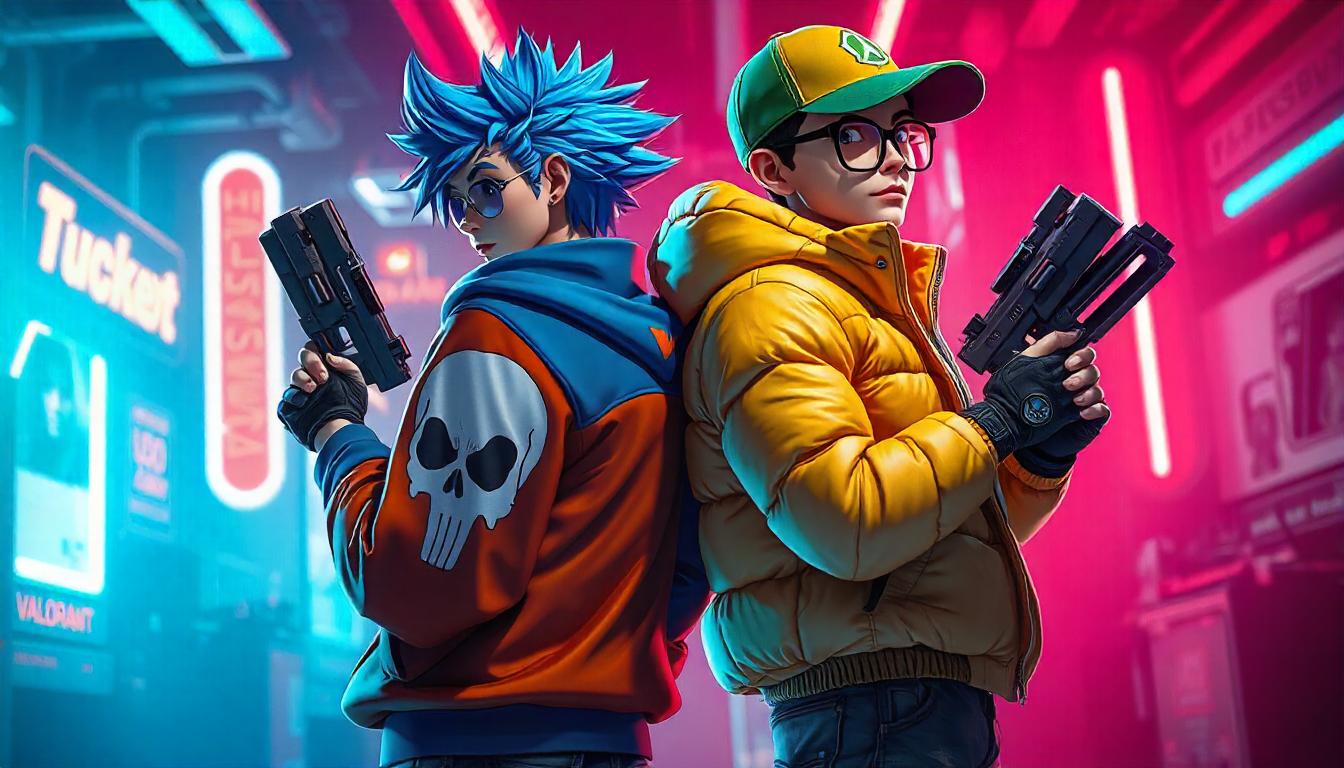Short Summary:
Valorant, developed by Riot Games, is a free-to-play tactical first-person shooter that blends precise gunplay with unique agent abilities. Since its release in 2020, it has revolutionized the esports landscape, captivating players with its strategic depth, diverse characters, and a competitive ecosystem designed for accessibility and mastery. This article delves into its gameplay mechanics, key features, competitive scene, and future prospects.
Introduction
Valorant emerged as Riot Games’ ambitious entry into the first-person shooter (FPS) genre, a space dominated by titles like Counter-Strike and Overwatch. By combining the precision of tactical shooters with the creative flair of hero-based gameplay, Valorant quickly carved its niche, attracting both casual players and competitive gamers.
The Origins of Valorant
- Development and Vision
Riot Games, known for League of Legends, ventured into the FPS genre with a clear mission: to create a game that emphasizes competitive integrity, low system requirements, and innovative gameplay. Valorant was designed to provide a level playing field for all players, regardless of their hardware capabilities. - Initial Reception
Valorant’s beta launch in April 2020 generated unprecedented hype, with millions of players eager to test its blend of tactical and hero-based elements. Its official release in June 2020 solidified its position as a game-changer in the industry.
Gameplay Mechanics
- Core Gameplay
- Valorant pits two teams of five players against each other in a bomb-defusal format.
- The attacking team aims to plant the Spike, while the defending team must prevent it or defuse it once planted.
- Each round requires precise coordination, strategic planning, and effective communication.
- Agent Abilities
- Unlike traditional FPS games, Valorant introduces agents, each with unique abilities that complement their roles—Duelist, Controller, Sentinel, and Initiator.
- Abilities like flashes, smokes, and healing offer creative ways to outmaneuver opponents while keeping gunplay as the primary focus.
- Weapons and Economy System
- Players manage an in-game economy to purchase weapons, shields, and abilities at the start of each round.
- The strategic balance between saving (eco rounds) and buying (full buy rounds) adds another layer of depth.
Key Features
- Precision and Competitive Integrity
- Valorant employs a robust anti-cheat system, Vanguard, ensuring fair play.
- Its emphasis on precise shooting mechanics rewards skillful aim and positioning.
- Low System Requirements
- Designed to run on a wide range of PCs, Valorant ensures accessibility for players worldwide.
- Regular Updates and Maps
- Riot consistently introduces new agents, maps, and gameplay updates, keeping the experience fresh and engaging.
- Community Engagement
- Riot actively listens to player feedback, fostering a strong bond between the developers and the community.
Esports and Competitive Scene
- Valorant Champions Tour (VCT)
- Riot Games launched the VCT to establish Valorant as a premier esport.
- The tournament structure includes regional qualifiers, Masters events, and the year-end Champions tournament.
- Player Base and Professional Teams
- Valorant has attracted talent from other games, creating a diverse and competitive pool of professional players.
- Organizations like Sentinels, Fnatic, and 100 Thieves have built iconic teams.
- Global Reach
- The game’s popularity spans continents, with thriving competitive scenes in North America, Europe, Asia, and South America.
Valorant’s Impact on the FPS Genre
- Blend of Genres
- Valorant successfully merges tactical FPS elements with hero-based mechanics, inspiring similar innovations in other games.
- Redefining Esports Accessibility
- Riot’s emphasis on accessibility and inclusivity has democratized competitive gaming, allowing players from various backgrounds to participate.
- Cultural Impact
- Valorant has influenced gaming culture, with its agents and maps becoming iconic symbols in the gaming community.
Challenges and Criticism
- Agent Balancing
- Balancing the abilities of diverse agents is an ongoing challenge. Some agents have been criticized for being overpowered or underwhelming.
- Toxicity in Competitive Play
- Like many online games, Valorant faces issues with toxicity and unsportsmanlike behavior, despite Riot’s efforts to curb it.
- Maintaining Longevity
- With constant competition from new games, Riot must innovate continually to keep Valorant relevant.
Future Prospects
- Upcoming Features
- Riot has hinted at future updates, including new game modes, agents, and maps.
- The introduction of a console version could expand the player base significantly.
- Expanding the Esports Ecosystem
- Riot aims to make Valorant a staple in the esports world, with plans for more tournaments and grassroots initiatives.
- Community-Driven Growth
- By engaging with the community and addressing player concerns, Riot ensures Valorant’s continued evolution.
Conclusion
Valorant stands as a testament to Riot Games’ ability to innovate and dominate new gaming genres. Its blend of tactical depth, creative gameplay, and community-driven development has redefined the FPS landscape. As the game continues to evolve, its impact on the gaming industry and esports scene will undoubtedly grow, cementing Valorant’s legacy as a modern classic.
Let me know if you’d like adjustments or additions to any part!
